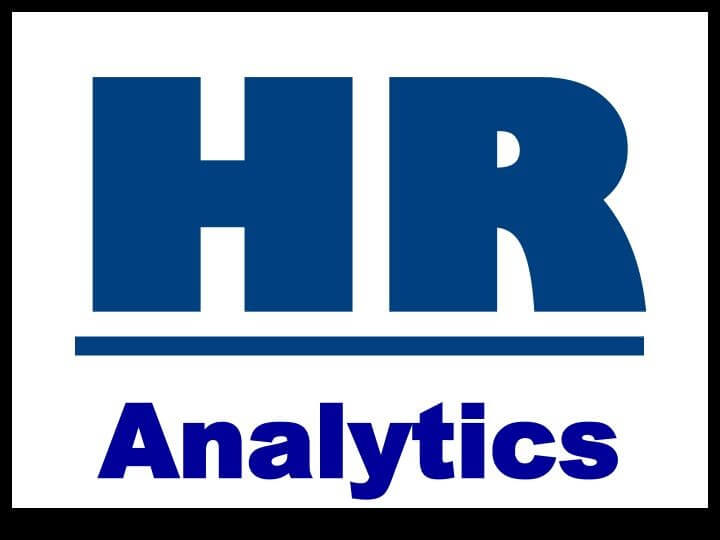In God We Believe, Everyone Else Brings Data ? Deming
The Human Resource (HR) function?s tryst with data is very old. Ever since the organized way of doing business started, managers have been concerned with this clich? question ? ?How do we find the right person for the right job at the right time and cost?? The answer to this is still evading managers. Back in the early 20th century, a Philadelphia based manufacturing company used a novel method to find the right people for its various positions. This company asked potential job seekers to assemble as a group outside the company premises and then the manager tossed an apple in the air. Whosoever caught the apple amongst the group was offered the job!
Later on, post-World War II and due to an acute shortage of skilled employees, the US Army started using skill tests to find people having the right attributes. This was adopted by AT&T in the corporate world. Subsequently more tests were designed by various psychologists like 16PF; TAT; MBTI and a host of others to find the right people. However, these tests lost legitimacy in the 1990s after it was found that they lacked scientific rigor and often had been designed to diagnose some kind of mental illnesses. The test outcomes had no correlation with workplace performance. From the mid- 1990?s onward, company executives and the HR function started generating their own questions to find the right people. These included why manholes are round; how many triangles can fit in a square of this size etc., more so popularized by Google which used these questions while selecting people in nine to ten rounds of candidate interviews.
In 2002, the Oakland A?s use of metrics by its General Manager, Billy Beane, in the selection of team members and the subsequent publication of Moneyball by Michael Lewis, emerged as a path-breaking strategy. The A?s with a paltry budget of USD 41 Million were able to successfully compete with the New York Yankees who had a budget of USD 121 Million. How the A?s did this is very simple ? it extensively used ?sabermetrics? (player data, based on extensive analysis of baseball) in the selection of players. The A’s found that players with strong sabermetrics correlated to winning games more than those players who were strong in traditional metrics like batting average. Also, the A?s found that players with strong sabermetrics cost far less to hire than those with strong traditional metrics. Traditional metrics were used heavily by others while selecting their teams. The A’s challenged the established convention in selecting baseball players and discovered that by using sabermetrics to measure player value, it got cheaper talent which delivered the results!
In 2006, Billy Beane gave a talk on the ?Moneyball Approach to Talent Management? at a Corporate HR Conference in Austin, Texas, and it caught the eye of corporate America. Simultaneously, Google started publishing findings of its oxygen project, which among other things, showed that academic grades and the types of questions it asks during selection, have no correlation to employee performance. Soon thereafter, there was a series of publications focusing on the benefits of using Analytics in workforce or people Management (Wall Street Journal; Forbes; Harvard Business Review; Fortune etc.) and these publications included ?Competing on Talent Analytics? by T. Davenport.
The corporate world saw a new hope and possible answer to the question of finding the ?right people? by the using a data-based approach to workforce management which got labeled as HR Analytics or People Analytics or even Workforce Science. What it promised was ?predictive selection of the right talent? using an algorithm-based model relying on huge volumes of data (often called big data). In an interview with The Atlantic, John Hausknecht, a professor at Cornell?s school of industrial and labor relations, said that:
?In recent years the economy has witnessed a huge surge in demand for workforce-analytics roles. You can now find dedicated analytics teams in the human-resources departments of not only huge corporations such as Google, HP, Intel, General Motors, and Procter & Gamble, to name just a few, but also companies like McKee Foods, the Tennessee-based maker of Little Debbie snack cakes.?
You May Also Like To Read:?Emerging HR trends for 2015
So what is HR or People Analytics or Workforce Science? HR or People Management has been traditionally seen as an ?art? relying on the use of gut feel or intuition while making people or HR related decisions in organizations. However, recent developments as mentioned earlier have highlighted the benefits of using data for people decisions and thereby giving a semblance of data-based objectivity (scientific basis) in people decisions. This scientific approach to Human Resource Management in organizations has given birth to a new field called HR Analytics or People Analytics or Workforce Science, which lies at the intersection of data algorithms and intuition in making people decisions across the employee life cycle. It is generally defined as systematic collection, analysis and interpretation of data to improve talent management decisions. It is equally important to know what is Not HR Analytics or Workforce Science. Generally, it doesn?t include simple headcount, employee engagement scores or attrition data. It is much more than these.
How HR Analytics will transform HR
For a long period, HR has been striving to get a seat ?at the table? along with finance, operations and marketing functions to become a strategic function in any organization. In its quest to become ?strategic,? it has been demonstrating its value to business by showcasing metrics focusing on ?efficiency metrics? like lowering HR cost per employee or reducing the cost of per hire etc. Some other organizations have gone a step ahead and showcased ?effectiveness metrics? like employee engagement or satisfaction increases or employee retention increases to highlight HR?s value add to business. However, the C-Level has been skeptical of these metrics and these have been generally labelled as metrics for justifying the existence of HR without any tangible link to either topline or bottom-line performance. This gap of showing how HR metrics link to business metrics has always remained. HR needs to move up the ?Measurement or Metrics Value Chain? (Figure 1) from efficiency ? effectiveness metrics to ?business impact? metrics to demonstrate the link between HR metrics and business metrics. These impact level metrics require the use of advanced statistical modelling techniques and complex algorithms to perform two key types of analysis: Predictive Analytics and Prescriptive Analytics. Predictive Analytics will inform the C- Level ?what will happen? ? for example ? who will quit next. Prescriptive Analytics will inform the C ? Level ?what can be done to prevent that attrition.? This kind of HR Analytics, purely based on data, catches the attention of the C ? Level and hence provides an opportunity for HR to become truly strategic. In turn, it will transform how HR is practiced. Google leads in the use of predictive and prescriptive analytics and a lot of other large companies like Shell, Procter and Gamble, Morgan Stanley, Xerox, and General Motors have started using these analytics. However, the number of companies globally using these advanced analytics is very small. The latest study done by Bersin by Deloitte in Feb 2014 shows that only 15% of Fortune 500 Companies are using these advanced analytics and out of this 15%, only 5% are using predictive and prescriptive analytics, while another 10% are using basic statistical techniques for HR analytics. The major reason why only a small number of Fortune 500 companies are using HR Analytics is because HR faces big challenges to scale up for using them.
What challenges does HR face for adopting HR Analytics?
Though the adoption is low as of yet, the use of HR analytics is catching up and it will increase in the next 10 years due to increasing C-Level expectations from HR. The following are some of the key challenges faced by HR to move up the HR Analytics Value Chain:
- Data Quality: As data is key for doing HR analytics, quality is a key issue. Employee data related to various aspects is treated as a ?transactional item? today rather than a ?strategic priority.?
- HR Employees: By nature, HR folks are relationship- and qualitatively-oriented. Using analytics requires becoming data savvy and acquiring a ?quant? mindset. This shift is another gap.
- HR Silos: Within the HR department, various verticals like Compensation, Learning & Development, OD, and HR Admin maintain data separately and data doesn?t flow seamlessly to do any meaningful analysis.
- Technology: Many companies have multiple applications for managing different types of employee data with access restrictions and some these have become legacy application thus posing challenge for use of data.
- Organization Culture and Leadership: The use of data in making talent decisions related to hiring, promotion, and rewards brings in a lot of transparency and impacts established power centers. The culture and leadership of many companies are not ready for this kind of openness and transparency.
HR analytics presents an opportunity for HR folks to become strategic and showcase HR?s value add to the business. Despite challenges, the use of HR analytics is here and its use will only increase in future. Whether it will be another fad like other management fads, only time can tell, but the jury is still out!
By: Dr. Kuldeep Singh, Bangalore, India.











This is a very interesting approach and slowly, but surely, HR becomes analytical. While long time ago you simply needed a man for the job, companies are now looking for the right man for the job who will remain faithful to the company. While in most companies worldwide this is something that it is not yet achievable, the HR field is in a continuous evolution and with the right tools it will soon become a strategic part in the company’s management.
The use of data and analytics is important in HR. 24 % say that the biggest obstacle to using data to make effective strategy decisions. A small number are doing it well. But the vast majority is still struggling. Thus, Analytics places onto game teams with the collective capabilities that will lead to the highest likelihood of success.